Dự án này cho bạn biết cách triển khai Đồ thuỷ tinh minh hoạ chức năng chính của Google Mirror API.
Để xem bản minh hoạ đầy đủ hoạt động của dự án bắt đầu nhanh, hãy truy cập https://glass-python-starter-demo.appspot.com. Nếu không, hãy đọc tiếp để xem cách triển khai phiên bản của riêng bạn.
Điều kiện tiên quyết
SDK App Engine dành cho Python – Dự án bắt đầu nhanh Python được triển khai bằng App Engine. Bạn cần Python App Engine SDK để phát triển và triển khai dự án. Chạy trình cài đặt nếu phù hợp với nền tảng của bạn hoặc giải nén tệp zip ở nơi thuận tiện.
Tạo một phiên bản Google App Engine
Bạn cần lưu trữ dự án bắt đầu nhanh trên một phiên bản của Google App Engine:
- Truy cập http://appspot.com.
- Nhấp vào Create Application (Tạo ứng dụng) và tạo một phiên bản Google App Engine công khai được lưu trữ trên
appspot.com. - Cung cấp Mã nhận dạng ứng dụng cho ứng dụng và để trạng thái xác thực Mở cho tất cả Google Người dùng tài khoản. Sau này, bạn sẽ cần mã nhận dạng ứng dụng để định cấu hình dự án bắt đầu nhanh.
Tạo dự án Bảng điều khiển API của Google
Tiếp theo, hãy cấp quyền truy cập vào Google Mirror API:
- Chuyển đến bảng điều khiển API của Google và tạo một dự án API mới.
- Nhấp vào Dịch vụ rồi bật Google Mirror API cho dự án mới của bạn.
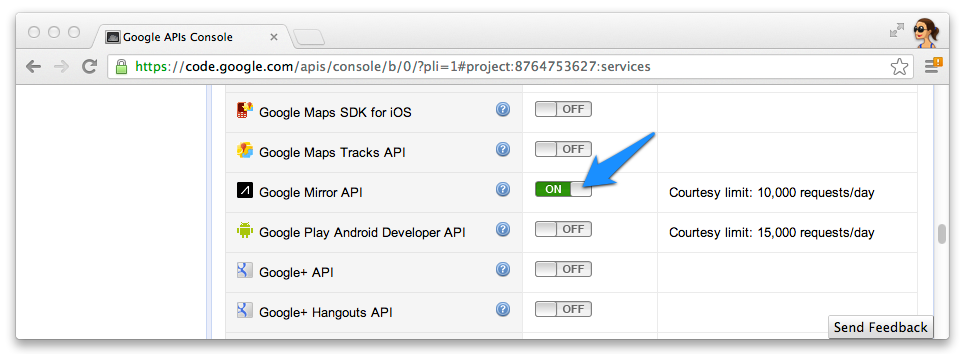
- Nhấp vào Quyền truy cập API rồi tạo mã ứng dụng khách OAuth 2.0 cho một ứng dụng web.
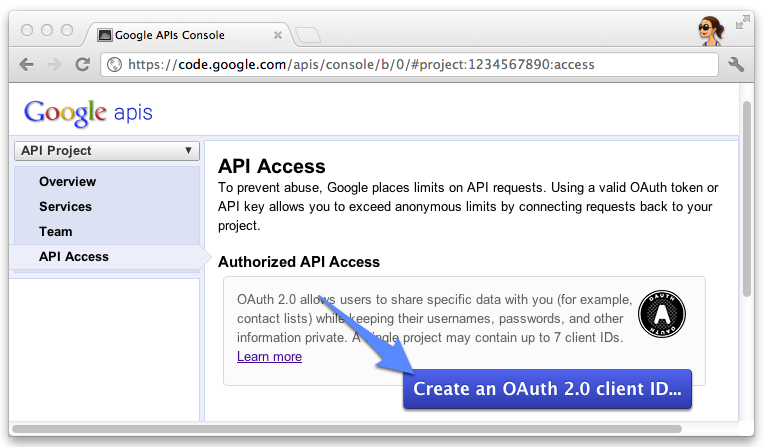
- Chỉ định tên và biểu tượng sản phẩm cho Đồ thuỷ tinh của bạn. Các trường này xuất hiện khi cấp quyền sử dụng OAuth
màn hình hiển thị cho người dùng.
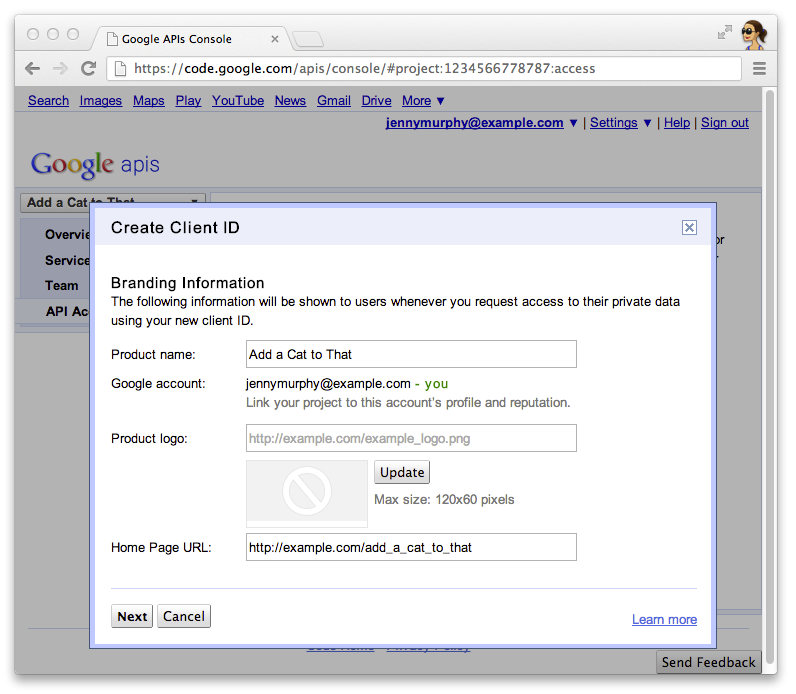
- Chọn Web application (Ứng dụng web) rồi chỉ định giá trị bất kỳ cho tên máy chủ, chẳng hạn như
localhost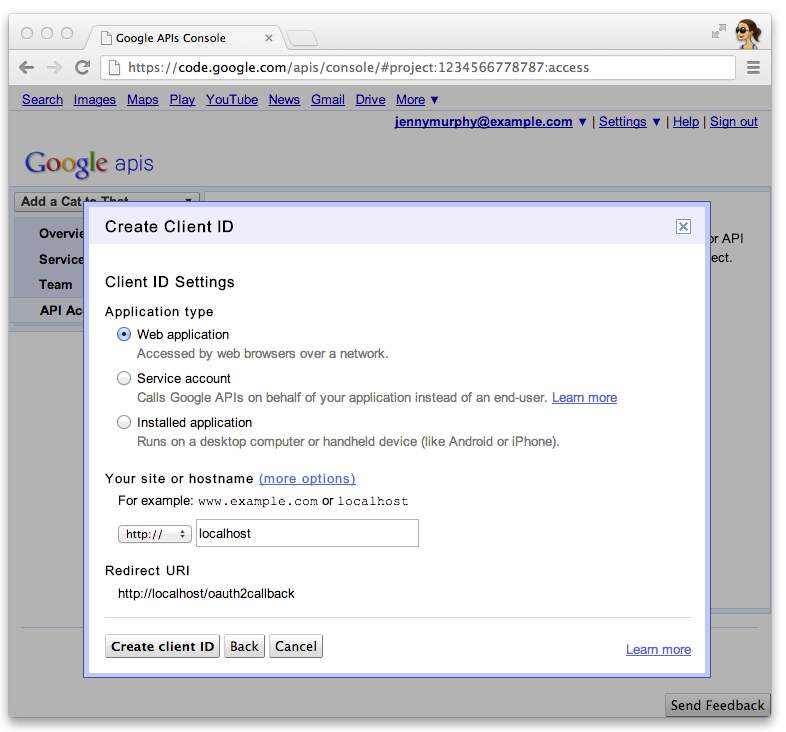
- Nhấp vào Edit settings... (Chỉnh sửa chế độ cài đặt...) cho Client-ID để chỉ định URI chuyển hướng. Nêu rõ
http://localhost:8080/oauth2callbackvà URL gọi lại cho App Engine của bạn ví dụ:https://myappengineinstance.appspot.com/oauth2callback.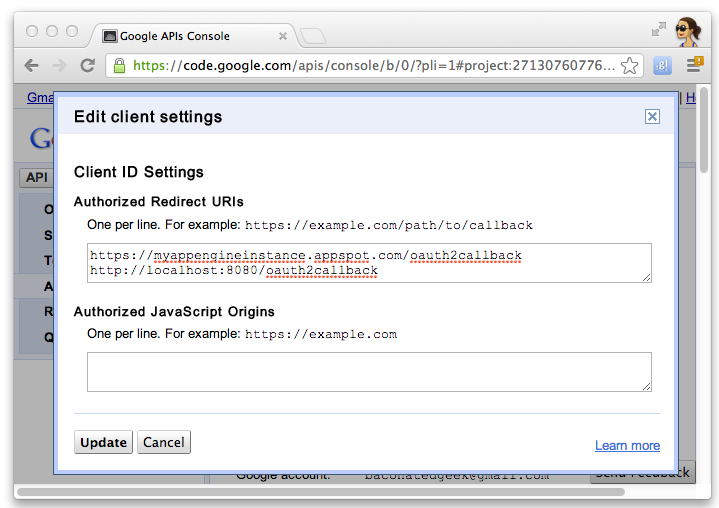
- Ghi lại mã ứng dụng khách và mã bí mật từ Bảng điều khiển API của Google. Bạn sẽ cần
để định cấu hình dự án bắt đầu nhanh.
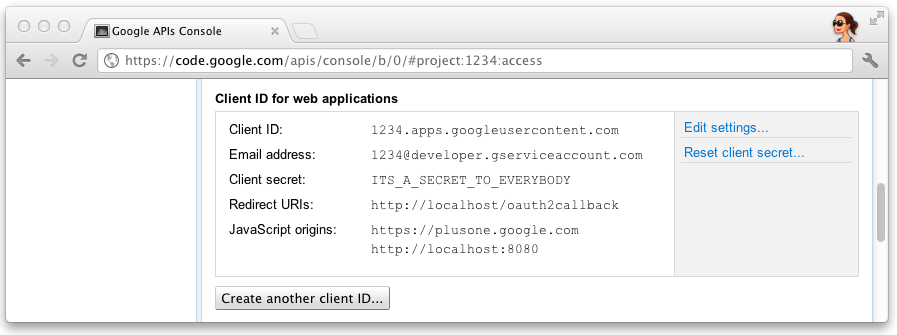
Định cấu hình dự án
Định cấu hình dự án Bắt đầu nhanh để sử dụng thông tin ứng dụng API:
- Nhập mã ứng dụng khách và mật khẩu của bạn trong
client_secrets.json:{ "web": { "client_id": "1234.apps.googleusercontent.com", "client_secret": "ITS_A_SECRET_TO_EVERYBODY", "redirect_uris": [ ], "auth_uri": "https://accounts.google.com/o/oauth2/auth", "token_uri": "https://accounts.google.com/o/oauth2/token" } }
- Tạo tệp
session.secretđể lưu trữ các cookie của phiên hoạt động:$ python -c "import os; print os.urandom(64)" > session.secret
- Chỉnh sửa
app.yamlđể nhập mã ứng dụng App Engine của bạn:application: your_app_engine_application_id version: 1 runtime: python27 api_version: 1 threadsafe: true ...
Triển khai dự án
Nhấn nút Deploy (Triển khai) màu xanh dương trong giao diện GUI Khởi chạy App Engine hoặc chạy shell này để triển khai mã của bạn:
$ appcfg.py --oauth2 update .

